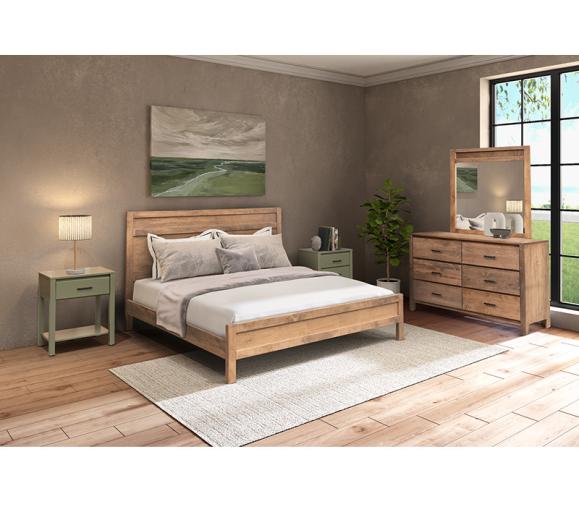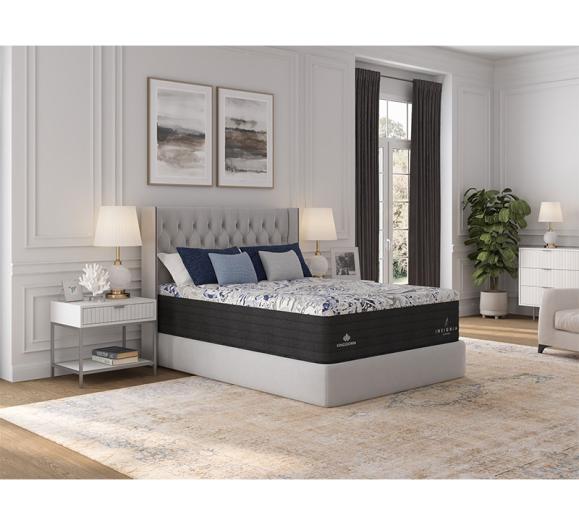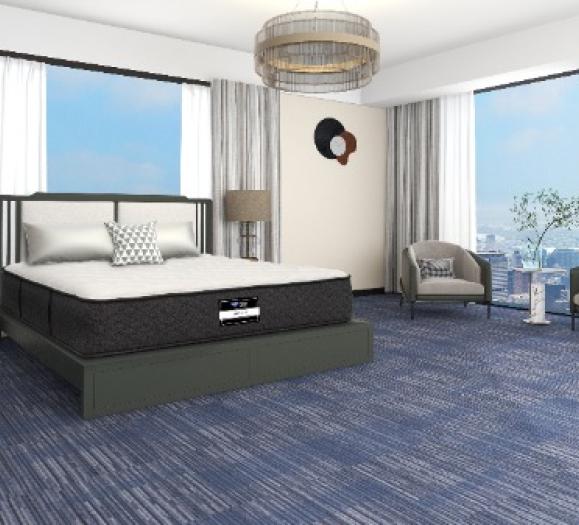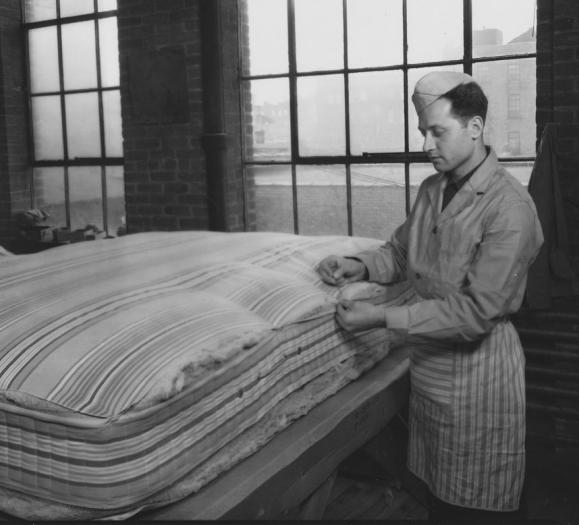The bedroom can be more than just a place to sleep. It doubles as an inner sanctum, where consumers begin and end the day by reading, relaxing or just unwinding.
If a person’s bedroom needs more serenity and less business, our design and retail experts provide tips for that comfortable, restful space eveyone dreams of.
Everyone has a different expectation and sensibility when it comes to bedroom design. Some err on the side of practical while others prefer to go all out. There is no right answer except what’s right for each individual. Find what brings the most comfort — physically and psychologically — and fill the space accordingly.
There’s a lot that goes into making a bedroom particularly serene. According to Kristi Hopper of Kristi Hopper Designs based in Dallas, a large part of that begins with the furniture. Overall design plays a crucial role in creating a restful space. A clean and uncluttered space with a neutral color palette can help create a sense of calm and serenity.
“The furniture needs to be beautiful,” she says. “That includes the bed, the nightstands, the lamps. It needs to be something that makes my client or an end user happy to look at when they come into the room. That also includes an overhead fixture, whether that’s a fan or a light fixture.”
Hopper suggests that the room also be able to transform easily between light and dark, whether it be with roller shades, or a blackout window treatment. Draperies are another classic way to block the light in a bedroom. Blackout liners applied to the backs make them opaque, and won’t add significantly to the cost.
“I usually do curtains because it softens the space,” she says. “It takes care of a lot of gaps that you inevitably get from a roller shade or wood blind. Any little bit of light can drive people crazy, especially when it’s a beam of light coming through the side of the curtains.”
In addition to the physical aspect of how textiles impact our rest, they make a significant impact psychologically. Textiles soften the hard edges that typically fill our rooms, from the architectural elements enveloping each space, to the furniture added later.
“Before we crawl into bed, our feet are carrying us through a night time routine within the space,” says Ben Chhabra, President and CEO of Amity Home in California. “A soft area rug that extends amply on either side of the bed will send a message through those toes that rest is on its way. Curtains soften the edges and light exposure in a room. Invest in operable, black out lined panels if you are a light sensitive sleeper.”
Choosing a mattress is also important for proper sleep and relaxation; industry standard suggests customers replace their mattress every seven to eight years. Will you go for firm or soft? Synthetic or wool filled? Pocket sprung or memory foam? Hopper says companies such as Kingsdown have created technology to help customers select the best mattress for their bodies.
“It takes the guesswork out for me and my clients,” Hopper says. “They lay on top, and it gives them a printout of what to buy. If they share a bed, they’ll figure that out too. As a designer or even for a retailer, it helps sales because the technology backs it up.”
As mattresses increase in price, they tend to have a higher spring count and better-quality fillings. The greater the number of springs and the more luxurious the fillings, the more the mattress will contour to your body, and the less interrupted and more comfortable your sleep should be.
The overall design of bedding can also have a significant impact on rest.
“A well designed bedding set can enhance the overall aesthetic of a space and create a sense of calm and serenity, which can promote better sleep,” says Chhabra “Some key elements that can impact the design of bedding are material, color and texture.”
Chhabra says cotton sheets provide a cool touch at first and warm to body temperature, great for those who prefer to fall asleep in a brisker environment. Linen sheeting is a “temperature neutral” option — neither cool at first touch nor overly warm as the night wanes.
“Given that we spend nearly a third of our lives in sleep, our cocoon for that time is immensely important,” he says. “Layers are a great option for those who have both a hot and cold sleeper sharing the same space. A lightweight cotton layer under a down fill duvet cover can make both ends of the spectrum very cozy.”
When dressing the bed, Hopper also uses Cozy Earth’s organic bamboo bedding.
“They have blankets, sleepwear and duvets in bamboo as well,” she says. “Typically I give my clients the sleepwear too, because organic bamboo repels your sweat. It doesn’t sink in like it does in cotton, so you sleep cooler.”
She also pairs this with a custom-made pillow, tailored to each client’s body. Pillows play an important role in providing support and comfort for the head and neck while sleeping, as they help to maintain proper spinal alignment.
“I recommend down alternative-filled pillows as the best option for most people,” Chhabra says. “These pillows are filled with synthetic materials that mimic the feel and properties of down, but are typically more affordable and hypoallergenic than pillows filled with goose or duck down. Additionally, down alternative-filled pillows are easier to care for, as they can be machine washed and dried.”
Finish off your bed with a beautiful selection of cushions and throws to “make it pretty on top,” and provide an element of coziness.
“Functional decorative items like a cuddly throw is another no-brainer, but there are definite benefits to some items that are often overlooked,” Chhabra says. “A Dutch Euro (a custom size euro made by Amity Home) is the perfect pillow to rest against for reading in bed.”
“I usually do a cotton coverlet, decorative pillows and maybe a throw at the end,” Hopper says. “That’s what I give all my clients, and they love it. I’ve had them stop me on the street and say, “I’ve slept better than I’ve slept in years.’”






